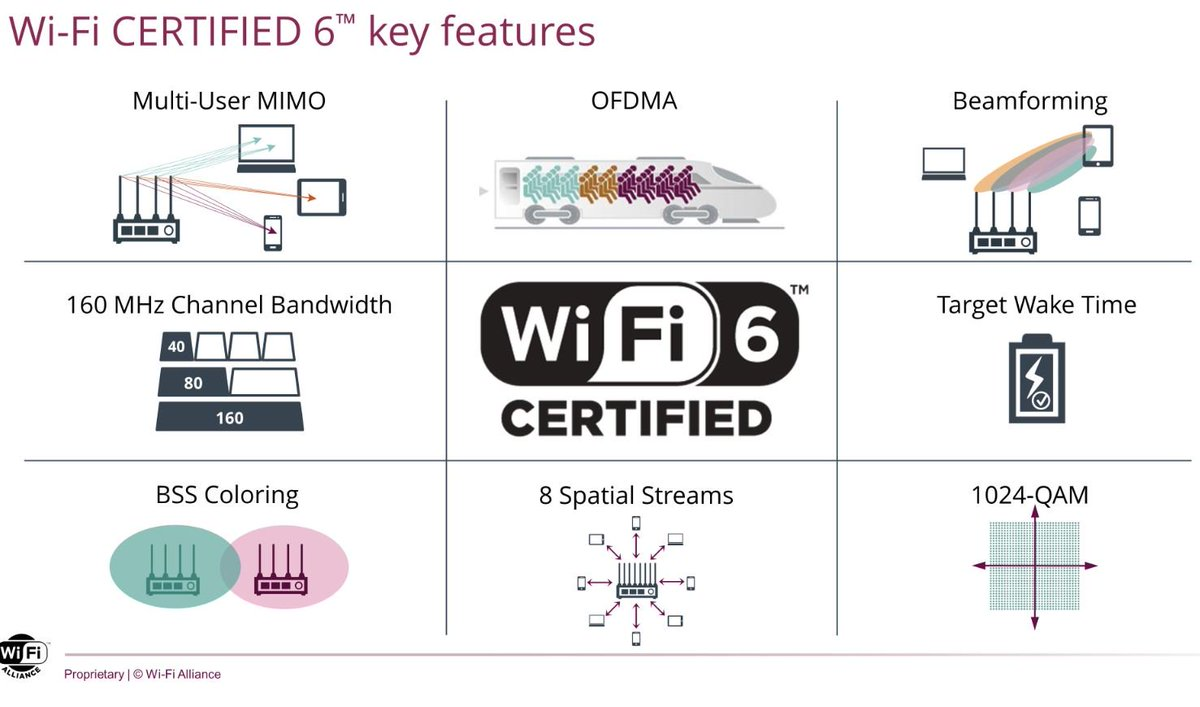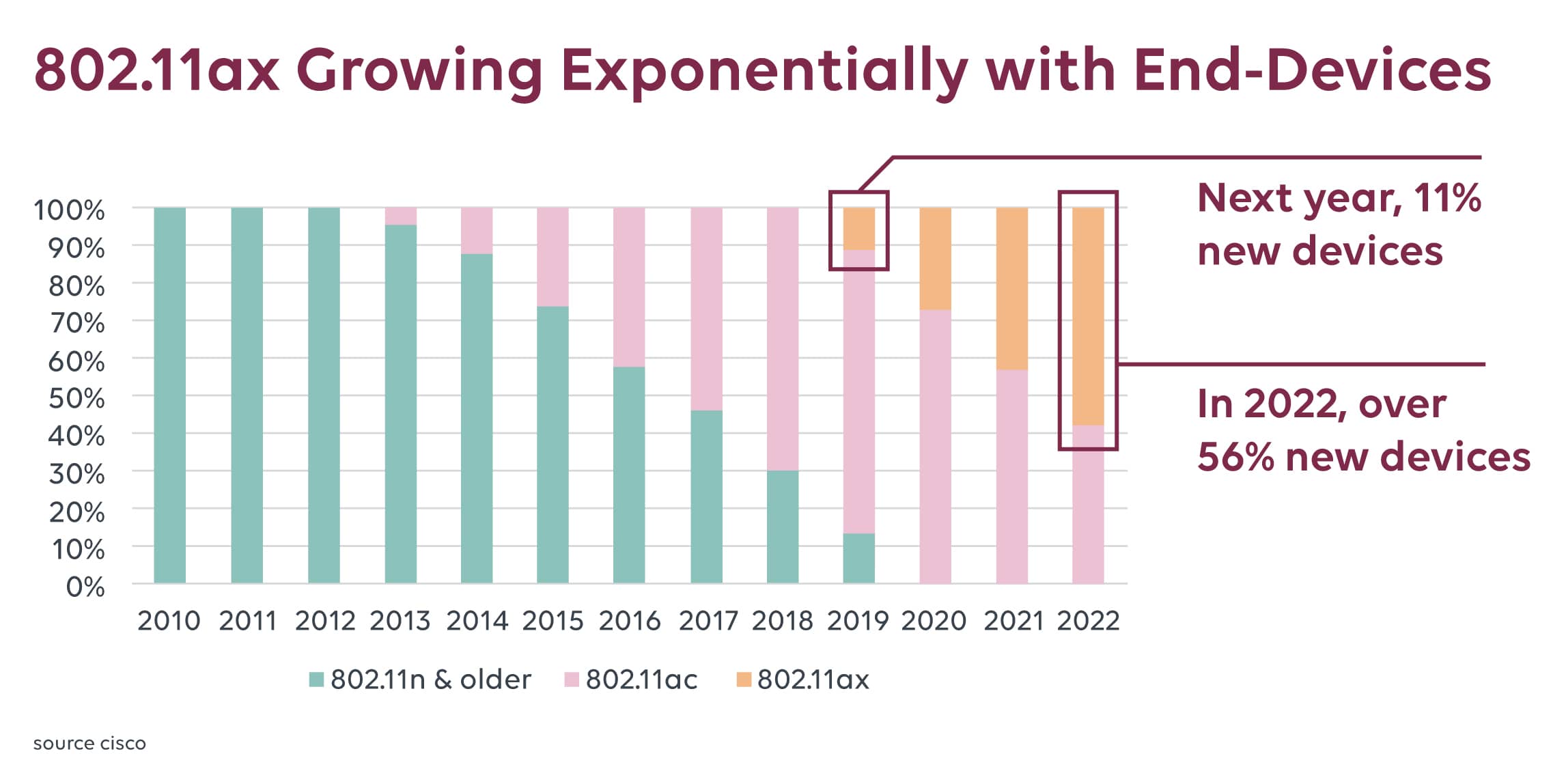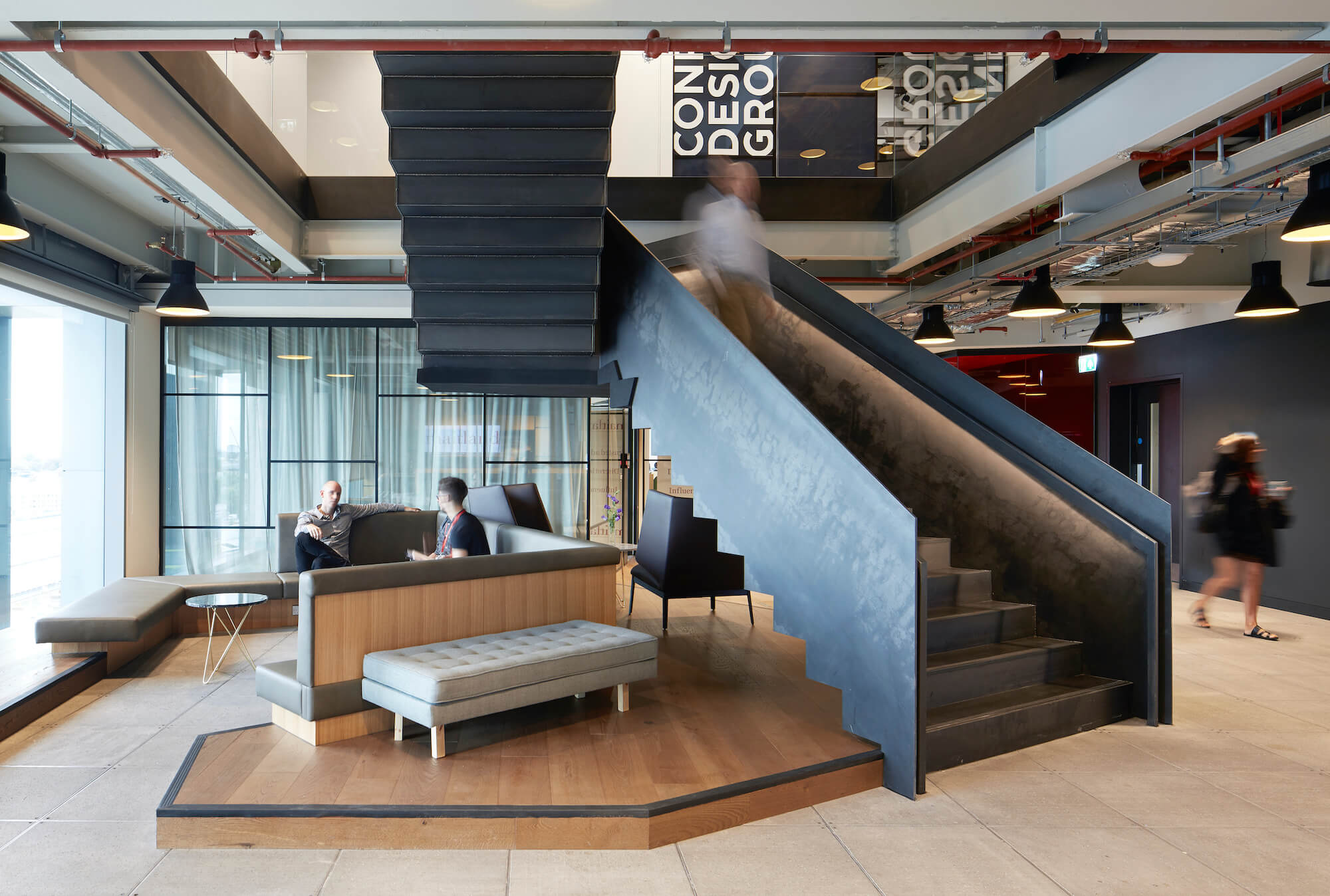WiFi 6: Revolutionizing Wireless Connectivity and Future Prospects
Although WiFi is a technology known by all, its developments are more discreet than those related to cellular networks. Since the appearance of WiFi in 1999, a new standard has been released every five years. WiFi 6, called IEEE 802.11ax, was approved by the WiFi Alliance in September 2019. But what promises does this new standard bring?
Like any technology, WiFi evolves at a rate aligned with consumer needs. Cisco forecasts that by 2022, 51% of all internet traffic will derive from WiFi connected devices. WiFi 6 will therefore gradually be deployed to a dynamic market, as compatible terminals and equipment are renewed.
1. What does WiFi 6 brings compared to WiFi 5?
Currently, WiFi 5 already allows an exceptional quality of service on both 2.4 and 5 Ghz bands with different ranges and speeds for each frequency. But the theoretical speed of a WiFi 6 access point is over 40% higher than that provided by WiFi 5, in addition to further enhancements:

- Faster speed: (+ 40% versus WiFi 5) even if this remains to be a theoretical speed, the average speed of connectivity will be boosted with WiFi 6
- More efficient in dense environments: Thanks to the combination of OFDMA and Multi-User MIMO technologies, a solution has been provided for mobile connectivity in high congestion areas, such as airports or train stations.
- Improved range: WiFi 6 incorporates a feature that allows our devices to use bandwidth more efficiently (again, thanks to OFDMA). Specifically it will increase the range of our router and therefore improve the range of WiFi coverage.
- Less energy-consumption: Target Wake Time allows devices to remain inactive until it is their turn to transmit data. This opens up possibilities for the use of WiFi in IoT (to connect a variety of different sensor or other IoT objects)
2. How fast will WiFi 6 be adopted?
Despite the relatively short life cycle of consumer devices, the evolution towards WiFi 6 will, however, remain to be very gradual throughout 2020 and 2021, for two reasons:
Terminal compatibility
- Consumer side : None of the big four broadband providers in the UK are, at the time of writing, providing WiFi 6 devices, compared to other European countries such as France.
- Professional WiFi: the leading manufacturers have launched WiFi 6 hardware (positioned at the top of the range to date). At Wifirst, we are already deploying WiFi 6 for our retail customers, in particular to optimise the combined management of several wireless network infrastructures for their business needs.
Equipped terminals
- Today, there are around a dozen high-end smartphones with integrate WiFi 6 (iPhone SE, 11, 11 pro and 11 pro max; Huawei P40 pro; One plus 8 and 8 pro; the latest Samsung generations: Galaxy, Note and Floyd )
- As for computers, only a few high-end PCs are WiFi 6 compatible, and for the moment on the Apple side only the iPad Pro 2020 is WiFi 6 ready.
The market nevertheless predicts that in 2022, more than half of all new wireless access points will be WiFi 6 compatible:

3. WiFi 6 or 5G?
We believe that WiFi and 5G are complementary technologies for several reasons:
- Mobile phones struggle to receive a phone signal through walls. The new HQE standards emphasise this problem: for example, the glazing used in HQE buildings must incorporate a metal layer which acts as a Faraday cage (a metal enclosure designed to block electromagnetic fields).
- Most electronic equipment incorporates WiFi microchips, and connectivity is the real heart of product functionality. It is estimated that there are 10 times more terminals in circulation that support WiFi than terminals that support cellular networks. WiFi is, therefore, the fuel for smartphones, tablets, speakers and other connected objects.
- Only WiFi can offer private local networks: with 4G and tomorrow 5G, our equipment can access the internet, but cannot directly interact with each other. To achieve this, each device must be on the same LAN (Local Area Network) or VLAN (Virtual Local Area Network). WiFi is the perfect solution to manage private LAN and/or VLAN traffic.
- On the speed side, a single WiFi 6 terminal is equivalent to a 5G antenna. Consequently, when 50 access points are deployed in a hotel, the speed benefit in comparison to 5G is extensive.
The imminent arrival of WiFi 6 will, therefore, promise a significant improvement for WiFi technology. However, with the slow but gradual adoption of WiFi 6, WiFi 5 is still a fantastic technology with over 8 billion chipsets sold each year and a dominant market place. Ultimately, there are many factors to consider when deciding which technology is right for you today, and Wifirst is here to help you to make an informed decision.
- Wifi (37)
- Hotel Industry (18)
- Digital Workplace (13)
- Behind the scenes (8)
- IPTV - Signage (8)
- Optical fibre (7)
- Green-IT (5)
- Retail (5)
- Education (3)
- Healthcare (2)
- Cybersecurity (1)
- General (1)
- Hospitality (1)
- PBSA (1)
- Student Accommodation (1)
- Telephony (1)
- Tips and tricks (1)
- Tourism (1)
- Wifirst (1)
You May Also Like
These Related Stories

Choosing the Right WiFi Standard: WiFi 6, 6E, or 7 for Your Business

On our way to WiFi 6E...
